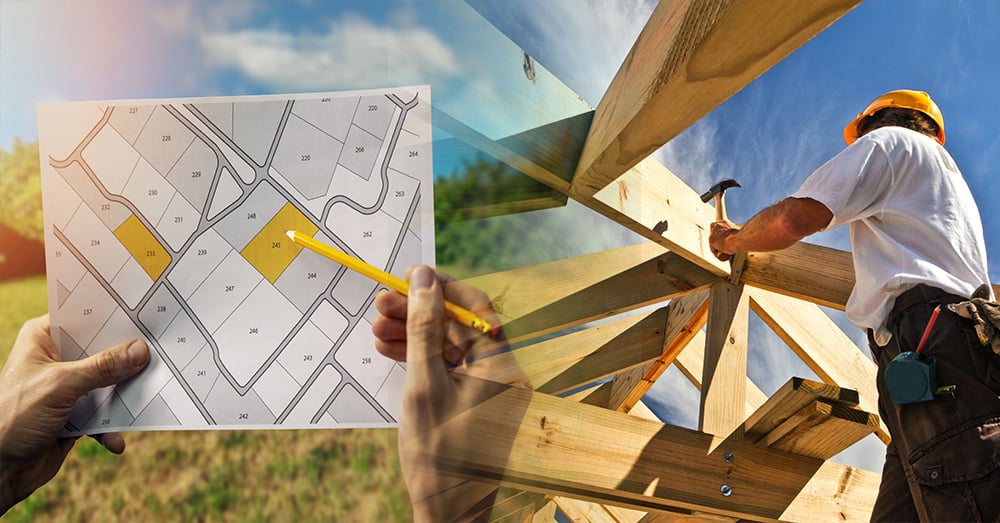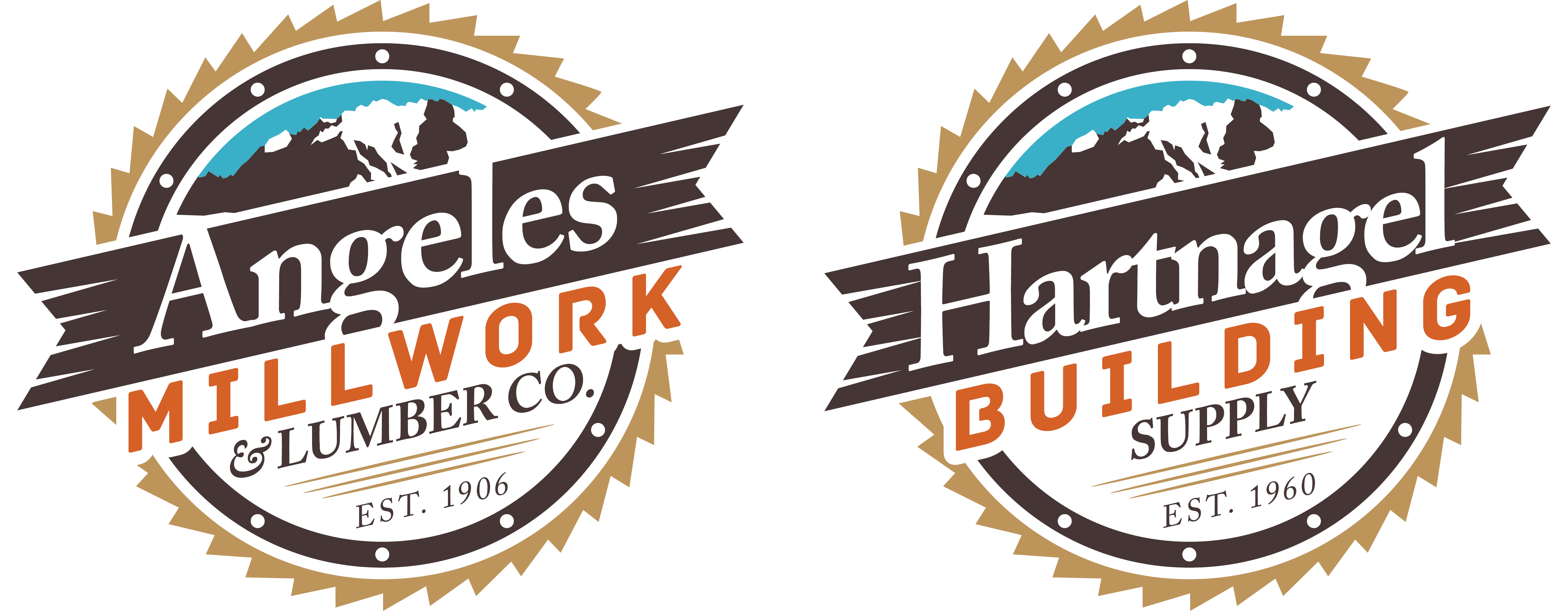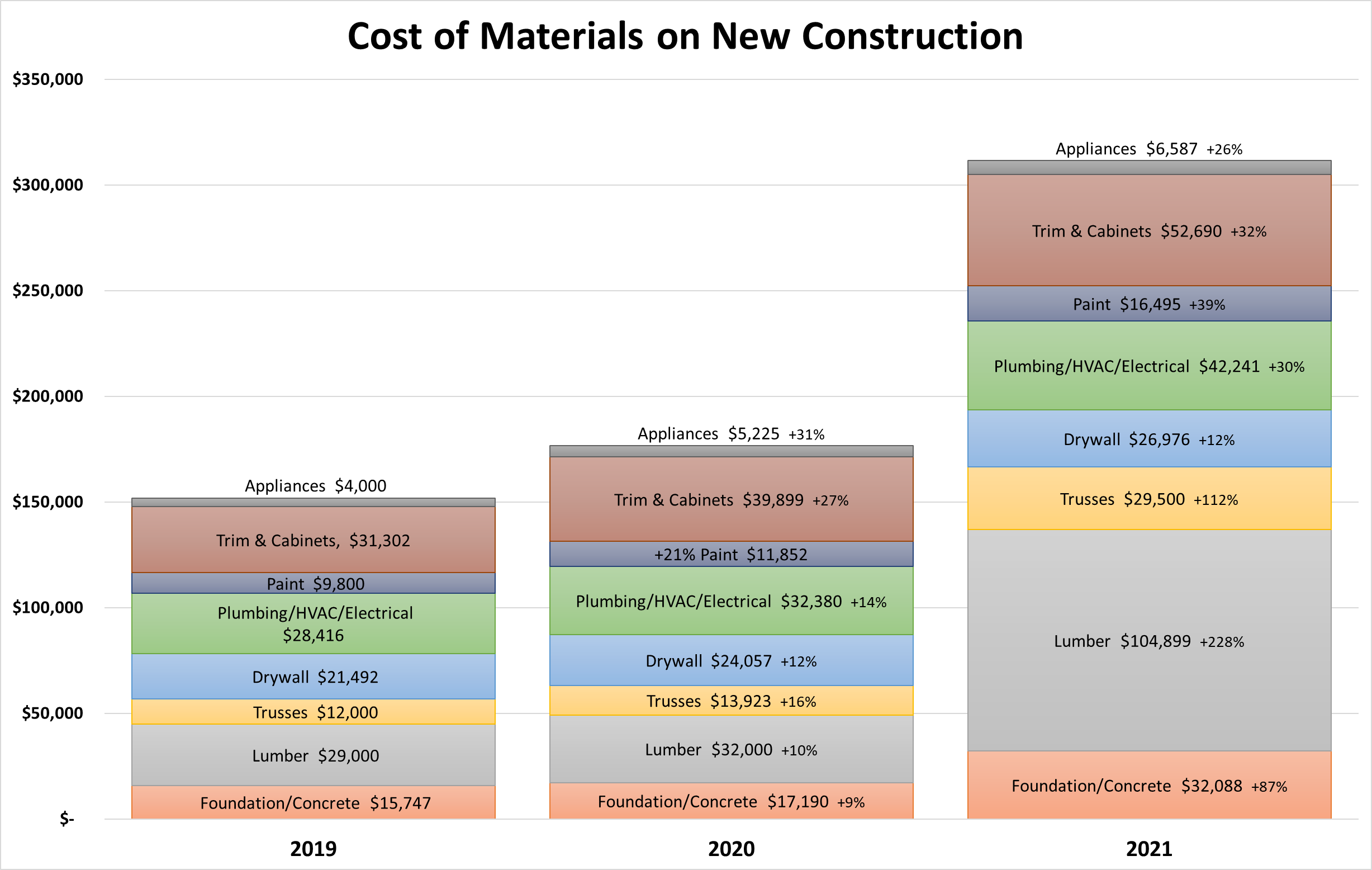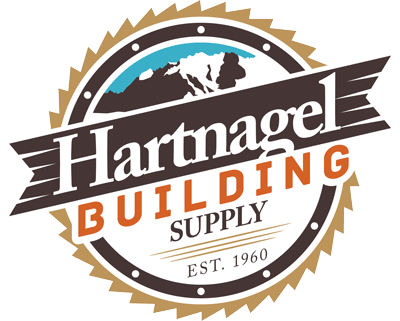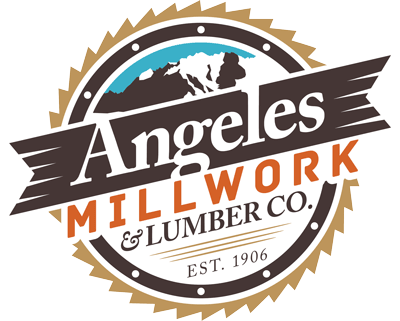
Both locally and nationally, the housing and construction industry has been experiencing unprecedented inflation in pricing. You’ve probably seen the memes all over social media (“Take me somewhere expensive” – as the couple sits for dinner down the row of lumber), and we certainly hear the sticker shock daily from customers.

So today, we wanted to take a few minutes to dive into why we’re at the place we’re in and explain the current market. To begin, below is an example of the cost of material for a home in 2019, 2020, and currently in 2021. Of course, every home is different, but this is a reasonable model for our purposes. The chart shows both the total cost of materials and the individual segments, with a couple of important absences that we’ll discuss later.
The overall cost of materials for a home saw a decent increase of about 16% from 2019 to 2020. The most significant percentage jumps were in Appliances (31%), Trim & Cabinets (27%), and Trusses (16%).
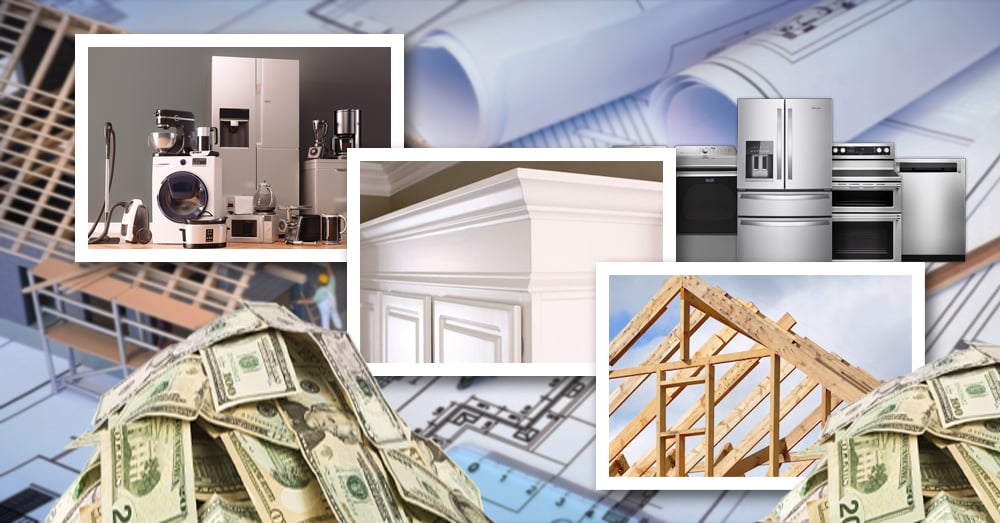
There were two significant factors at play here:
Difficulty sourcing materials, often from overseas
Lack of labor in factories to produce the finished goods
The first effect on the supply chain from COVID was in overseas goods. Many factories simply shut down or couldn’t ship materials, especially from hard-hit Asia. Domestically, while COVID effectively sidelined a large portion of workers, the building industry saw an increase in demand. Meanwhile, many homeowners began working on home projects like decks and fences. All those workers staying home caused material suppliers to constrain their supply. This would set the stage for the out-of-control price increases of 2021.
From 2020 to 2021, the cost of materials on a home went up a staggering 76%. Every single item saw double-digit increases, but we felt this pain most in lumber (228%), Trusses (112%), and Foundation/Concrete (87%). With demand for homes surging and a lack of available inventory stemming back to the recovery after the Great Recession, those who had continued to prosper during the pandemic were desperate to find homes. Skyrocketing demand will always drive the price up, however, in this case, it was exacerbated by lack of materials, attributable to lack of raw material and lack of labor to create the finished goods. With less to go around and higher demand, the price increase was explosive and often constant.
Throughout the last 12 months, our stores have often struggled to purchase inventory and had to get creative with our purchasing. Even still, we are on allocation from many suppliers (meaning they will only sell each customer a certain amount of material – in the case of I-Joists, each supplier was only allocated 80% of their previous year’s sales). Thankfully we may be slowly turning a corner, but more on that in a moment.
